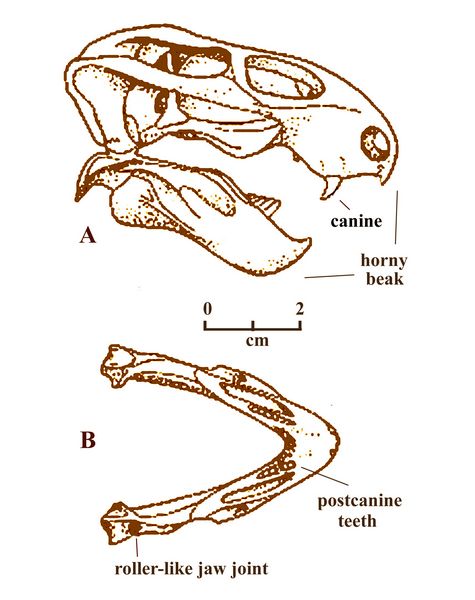Athena Review Image Archive ™
Pristerodon skull and lower jaw

Skull and lower jar of Pristerodon (after Benton 2005).
Pristerodon were small dicynodonts ("two dog teeth"), a common group of therapsids or mammal-like reptiles from the Late Permian period, found in South Africa. First described by T.H. Huxley in 1868, it has since been found in both India and Tanzania (Ray 1999). They are included in the clade Therapsida, the infraorder Dicynodontia, and the family Eumantellidae.
Like most dicynodonts, Pristerodon were herbivores who lived on river floodplains. They had a skull 4-6 cm long, with a short snout. Unlike most other dicynodonts, they had small canine teeth as well as six pointed postcanine teeth on either side of its upper and lower jaws. The rest of the jaws were made of sharp bone, probably covered with keratin or a horny surface (Benton 2005). Pristerodon lived on vegetation which it snipped off with its horny beak, then passed back to its cheek area for grinding with its molars before swallowing. Pristerodon's jaw was built as a flexible unit, able to slide back and forth while eating.
Pristerodon have
also been identified as among the earliest land animals with an eardrum, and were thus able to hear
airborne sounds (Laass 2015).
References
Benton 2005 Vertebrate Paleontology.
Laass, M. 2015. The origins of the cochlea and impedance matching hearing in synapsids. Acta Palaeontologica Polonica. 60.
Ray, S. 1999. Permian Reptilian Fauna from the Kundaram Formation, Pranhita- Godavari Valley, India. Journal of African Earth Sciences, 29 (1), pp. 211-218.
Copyright © 1996-2020 Rust Family Foundation (All Rights Reserved).